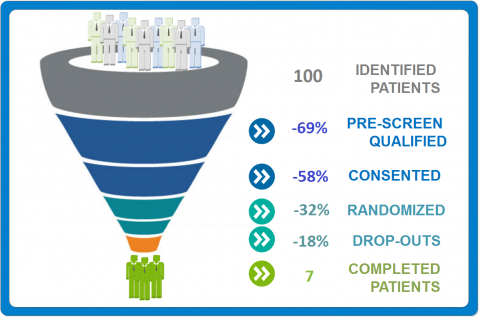CDER released its fourth annual Drug Trials Snapshots report, which shows a significant drop in the number of participants in pivotal novel drug trials that led to agency approvals.
The overall number of participants dropped by more than half from approximately 106,000 in 2015 to 44,000 in 2018, according to the latest report.

Mark Summers, president, patient engagement, WCG Clinical, noted that clinical studies — especially those for cancer drugs — don’t need as many people as they used to.
“In areas like oncology everything’s moving toward biomarkers. You don’t need as large a population. That could be a factor as well,” Summers said, cautioning that the report doesn’t speak for overall participation in clinical studies because it only covers the enrollment rate of pivotal studies for FDA approved drugs.
Another significant trend was a shift in the trial demographics toward inclusion of more female and black or African American participants. The overall percentage of women increased from 40 percent in 2015 to 56 percent in 2018, while black or African American participation doubled from 5 percent in 2015 to 10 percent in 2018. Hispanics were not recorded in the first two snapshot reports but accounted for 14 percent in 2017 and 2018.
“In recent years, the representation of certain subgroups, such as women and people of racial and ethnic minority groups, has become of greater interest to the general public,” CDER director Janet Woodcock said.
The trend for participants aged 65 and older was generally upwards, with a spike in 2017 to 32 percent, but dropping off last year to just 15 percent representation. The spike may have been the result of several trials that were focused toward geriatric patients, such as Portola Pharmaceuticals’ Bevyxxa (betrixaban) for prevention of thromboembolism.
CDER approved 59 novel drugs last year — either new molecular entities or biologics — ranging from oncology drugs to a preventive migraine drug to treatments for bacterial skin infections, smallpox disease and epilepsy, among others.
The report includes data on the ethnicities, age and sex of participants in each approved novel drug trial. Some trials differed significantly in terms of their demographics. For example, participants in the pivotal trial for Amicus Therapeutics’ Fabrys disease treatment Galafold (migalastat) were nearly all white (97 percent) and more than half were female (64 percent).
On the other hand, the key trial for Theratechnologies’ Trogarzo (ibalizumab-uiyk), an HIV-1 treatment, was more evenly distributed, with whites, black or African Americans, Asians and Hispanics accounting for 55 percent, 33 percent, 10 percent and 25 percent of the participants, respectively, with a 15 percent female makeup.
Read the report here: https://bit.ly/2DXLzHU.
